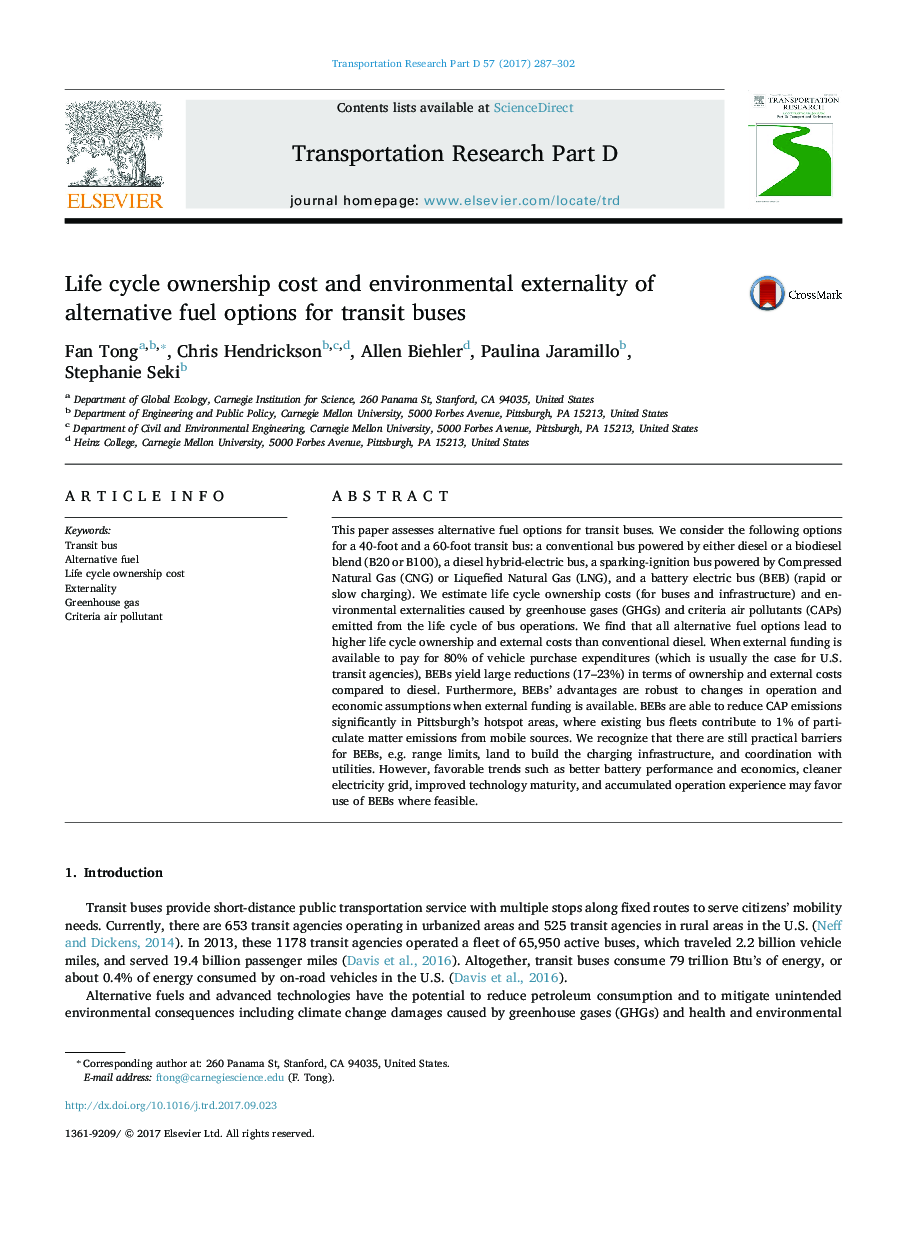| کد مقاله | کد نشریه | سال انتشار | مقاله انگلیسی | نسخه تمام متن |
|---|---|---|---|---|
| 5119317 | 1485867 | 2017 | 16 صفحه PDF | دانلود رایگان |
- Rapid-charging battery electric buses have the lowest ownership and external costs.
- Limited range remains a major practical challenge for battery electric buses.
- 60-foot transit buses have higher ownership & external costs than 40-foot buses.
- Externality from greenhouse gases and air pollutants can and should be considered.
- Transit buses emit 1% of particular matter from mobile sources in Allegheny County.
This paper assesses alternative fuel options for transit buses. We consider the following options for a 40-foot and a 60-foot transit bus: a conventional bus powered by either diesel or a biodiesel blend (B20 or B100), a diesel hybrid-electric bus, a sparking-ignition bus powered by Compressed Natural Gas (CNG) or Liquefied Natural Gas (LNG), and a battery electric bus (BEB) (rapid or slow charging). We estimate life cycle ownership costs (for buses and infrastructure) and environmental externalities caused by greenhouse gases (GHGs) and criteria air pollutants (CAPs) emitted from the life cycle of bus operations. We find that all alternative fuel options lead to higher life cycle ownership and external costs than conventional diesel. When external funding is available to pay for 80% of vehicle purchase expenditures (which is usually the case for U.S. transit agencies), BEBs yield large reductions (17-23%) in terms of ownership and external costs compared to diesel. Furthermore, BEBs' advantages are robust to changes in operation and economic assumptions when external funding is available. BEBs are able to reduce CAP emissions significantly in Pittsburgh's hotspot areas, where existing bus fleets contribute to 1% of particulate matter emissions from mobile sources. We recognize that there are still practical barriers for BEBs, e.g. range limits, land to build the charging infrastructure, and coordination with utilities. However, favorable trends such as better battery performance and economics, cleaner electricity grid, improved technology maturity, and accumulated operation experience may favor use of BEBs where feasible.
135
Journal: Transportation Research Part D: Transport and Environment - Volume 57, December 2017, Pages 287-302
